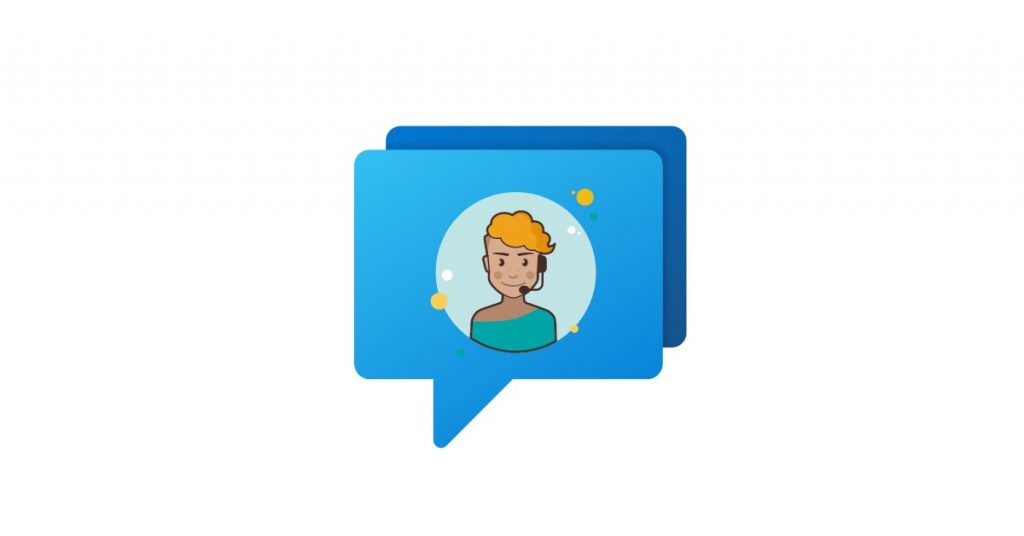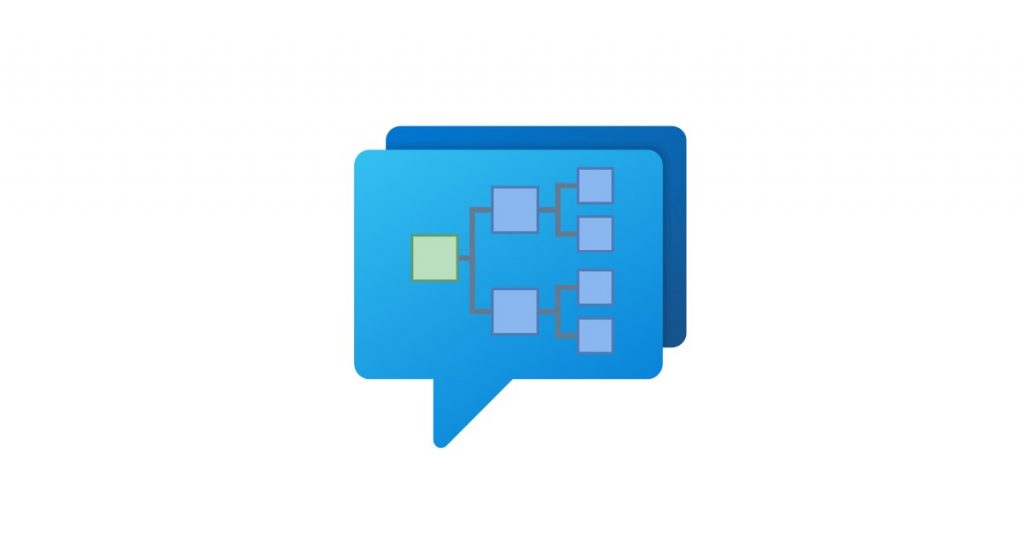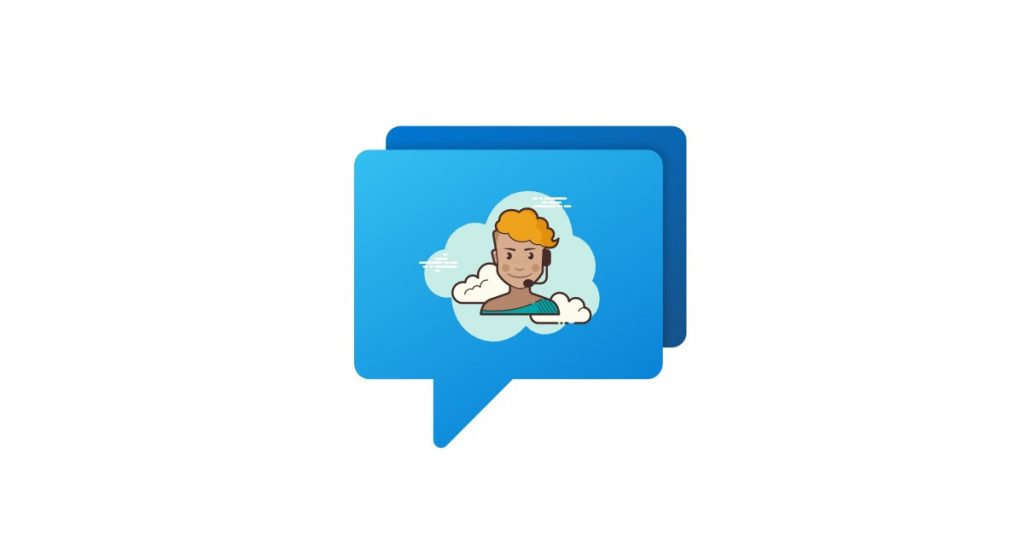With increasing competition, businesses have to go beyond merely responding to customer issues. They must resolve them before they even arise.
This proactive approach is now a necessity for companies that want to avoid customer churn and increase customer loyalty.
Why? Because 87% of customers want to be proactively reached out to by a company for customer service-related issues.
Ultimately, proactive customer service is now an expectation. And if you want your brand to be known for its exceptional customer service, there’s no way around it – you have to be proactive.
Keep reading to find out more about this approach to customer service, including how to implement it into your customer service strategy.
BONUS: We have included real-life examples of companies using proactive customer support.
What is Proactive Customer Service?
Proactive customer service is a strategic approach where businesses anticipate and address potential issues before they occur.
i.e. A proactive business that has scheduled a major software update for one of its products would email its users, send an in-app notification, or make a social media announcement that notifies customers of upcoming service interruptions.
This forward-thinking method transforms customer interactions from merely transactional to genuinely supportive, which can prevent common problems and enhance the overall customer experience.
Proactive customer care can take various forms:
- Self-service resources
- In-app guidance
- Alerting customers to errors
- New product recommendations
The core mentality behind proactive customer service is to go above and beyond, demonstrating a company’s commitment to customer care well beyond the initial purchase.
Proactive Customer Service vs Reactive Customer Service
In proactive customer service, the business takes the initiative to address potential issues before the customer even notices them. This means that solutions are provided in advance and customers don’t have to request help to receive support.
Proactive measures typically include guidance through in-app messages, notifications about service outages, and product recommendations based on purchasing patterns.
This approach can save both customers and support teams time and effort.
In reactive customer service, the business relies on the customer to initiate contact when they need an issue resolved. This approach requires the company to act quickly so that customers receive timely and effective solutions to their problems.
It’s impossible to foresee every issue customers may face, so reactive service is essential for dealing with those unexpected problems. This can also inform your proactive customer service strategies for handling similar matters in the future.
So, the most effective approach combines both a proactive and reactive customer service model.
What Are the Benefits Of Proactive Customer Service?
Implementing proactive customer service into your strategy can be a game-changer for your business.
Proactive support increases customer satisfaction
Proactive service anticipates customer needs and addresses them before they become problems.
Customers prefer not to deal with issues themselves, so by proactively reaching out, companies reduce frustration and increase satisfaction. This approach makes users more likely to recommend and continue doing business with a company that consistently delivers exceptional service.
Proactive support increases customer loyalty
A Gartner study found that proactive customer service results in an increase in Net Promoter Score (NPS).
Net Promoter Score is a key live chat metric that evaluates customer satisfaction and their willingness to recommend your brand to others.
To put it simply, it measures customer loyalty.
This data can be gathered via a survey that asks customers how likely they are to recommend your product to others.
If your NPS score has not been optimal, implementing proactive customer support can be a great way to build customer loyalty with future customers.
Proactive support helps recover abandoned carts
The average documented online cart abandonment is 70.19%. Businesses continuously seek ways to reduce this figure, and integrating proactive customer service is an effective solution.
The right proactive customer support tool will let you set up chat triggers when website visitors leave without performing your desired action – in this case, adding products to their cart but not completing the purchase.
For example, you could automate a message with a coupon to encourage customers to return and complete the conversion. With Social Intents, you can easily set up your proactive chat to reach out to potential customers with automatic chat invites.
Proactive support increases Average Order Value (AOV) and Customer Lifetime Value (LTV)
By proactively recommending items related to a customer’s previous orders or current cart contents, they become more likely to make additional purchases, especially if these recommendations come with perks like free shipping.
This proactive service not only enhances the shopping experience but also boosts the Average Order Value (AOV) and Customer Lifetime Value (LTV).
Proactive support reduces customer service costs
Statistics show that proactive customer service can lead to a 20-30% reduction in call center calls — lowering call center operating costs by as much as 25%.
By addressing issues before they become problems, proactive service reduces the number of incoming support inquiries. This lowers the workload on customer service teams and minimizes the need for extensive support resources and overstaffing.
How to Be Proactive in Customer Service
Implementing proactive customer support offers numerous advantages. Here are some key tips for successful adoption:
Get to know your customer base
To implement proactive customer service effectively, understanding your customers is crucial. Knowing their needs and frustrations allows you to predict where they might need help.
For instance, if your customer’s website is down and you are the hosting provider, it should be obvious that they’ll contact you. Similarly, new customers might need guidance on setting up their website.
Customer frustrations vary by business but commonly include:
- Missing or unclear product documentation
- Difficulty understanding documentation
- Payment errors
- Difficulty finding contact details
- Repeating information to multiple agents
- Unexpected shipping fees
- Website downtime
By listening to customer inquiries across various media channels, engaging with them on social media, and investigating common complaints, you can gain a deeper understanding of their needs.
Quick Tip: Analyze existing data, such as chat transcripts, to identify customer pain points. If an important page has a low CTR or high bounce rate, investigate potential issues there.
Gather customer feedback
While getting to know your customers’ needs is crucial, there is a limit to how much you can predict on your own. Your customers know their wants and frustrations best. So, asking for customer feedback is essential to proactive customer service.
To effectively gather customer feedback, you should leverage multiple channels and methods to ensure you capture a complete understanding of customer needs and frustrations.
Here are some ways you can do this:
- Feedback forms: Include feedback forms after key actions such as purchases or support interactions.
- Customer surveys: Send customer satisfaction (CSAT) or Net Promoter Score (NPS) surveys to past customers using tools like TypeForm or Google Forms. Ask specific questions like, “What could we have done differently?” or “How can we improve your experience?”
- Social media monitoring: Monitor and engage with feedback on social media platforms such as Facebook and Twitter. Pay attention to mentions, comments, and direct messages related to your brand.
- Helpdesk and knowledge base analysis: Review helpdesk tickets and knowledge base analytics to identify common customer questions and recurring issues. This data can highlight areas where proactive customer service is needed.
- Passive feedback: Implement built-in passive surveys within your product interface. For example, a feature request survey can allow users to submit suggestions without disrupting their workflow.
Create a knowledge base
A knowledge base is a collection of resources designed to address frequently asked questions (FAQs) and common customer problems.
For instance, let’s assume that a new customer buys software from you. Instead of getting frustrated about the setup process and asking your support team to help, they can simply look at the setup guide in the knowledge base.
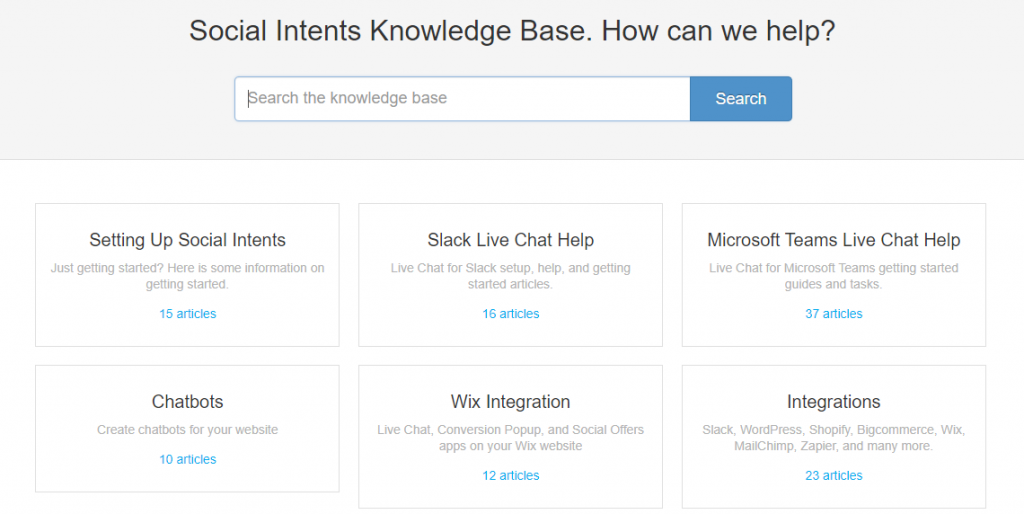
These resources can take various forms, such as buying guides, video tutorials, FAQs, and step-by-step guides.
By providing diverse formats, a knowledge base caters to different learning preferences and helps customers find solutions efficiently, reducing the need for direct interactions with a customer service representative.
There are several steps to building a knowledge base:
- Identify common questions: Use customer research and feedback to pinpoint common issues.
- Choose the appropriate solution: Determine the most effective solution for each issue.
- Select the right format: Complex tutorials might be better as videos, while straightforward answers can be in an FAQ format.
- Direct customers to your knowledge base: Make sure customers know how to find and use the knowledge base. Direct them to these resources during support interactions.
Make proactive customer recommendations
Deliver proactive customer service by suggesting products or services that complement the preference of each customer. Custom recommendations are a powerful form of proactive support.
Popular platforms like YouTube and Netflix use viewing history and ratings to suggest new content to users, ensuring they always have something they might enjoy watching. And that’s exactly why people spend hours consuming content on these apps.
Recommendations can be based on individual buyer behavior or algorithms analyzing patterns from similar customers. This approach not only shows users that you care about their interests but also drives revenue by encouraging additional purchases.
Implementing such a recommendation system involves:
- Data analysis: Examine customer behavior and purchase history.
- Algorithms: Use machine learning to identify patterns and preferences.
- Personalization: Tailor recommendations to individual user profiles.
- Feedback loop: Continuously refine recommendations based on customer feedback and new data.
Quick Tip: Implement a recommendation engine on your company website. These use past individual and collective data to show relevant items. For example, if you buy a book from Amazon, it will show you other books in the same genre or by the same author under the “You may also like” section.
Power your website with a chatbot
Chatbots are valuable automation tools that provide proactive customer service. They can engage customers 24/7, either through simple pre-programmed responses or advanced AI learning from interactions.
Chatbots can also assist customers who are about to abandon their carts, provide automated updates, and offer personalized recommendations. This type of proactive engagement enhances customer satisfaction and helps drive sales by addressing issues before they escalate.
Social Intents lets you integrate ChatGPT-powered chatbots into your media properties in just a few minutes. With a Proactive Chat feature, you get all the benefits of proactive support without overwhelming your customer service team.
Practice social listening
Social listening involves monitoring social media channels for mentions of your brand, competing brands, and your products or services. This practice allows you to capture customer sentiments, whether they’re expressing frustration or love for your brand.
By monitoring social media channels, you can track keywords and hashtags related to your business, gaining insights into customer opinions and experiences. This proactive approach helps you to address issues promptly. For example, if a customer tweets about a delayed delivery, you can immediately respond and offer a solution.
Here’s Nike solving a customer’s query on Twitter:

Source: Hootsuite
Streamline customer experience with automated scheduling
Automating scheduling processes is a great way to provide proactive customer support. For dynamic issues like shipping delays or server downtime, set up systems to update customers via SMS, email, live chat, or notifications. This proactive communication reduces customer effort and keeps them informed.
You can also automate routine tasks such as maintenance appointments or subscription renewals.
You can do this by placing customers on an automatic maintenance schedule or offering automatic payment plans for favorite products. This reduces the need for manual intervention and ensures continuous, hassle-free service.
Reward customers
Did you know 75% of consumers favor companies that offer rewards? Loyalty programs are a proactive customer service approach because they anticipate customer needs and reward continued patronage. By offering special deals and discounts, customers feel valued and appreciated, leading to increased repeat business.
These programs not only boost customer retention but also provide insights into user preferences, allowing businesses to tailor their offerings and enhance the overall customer experience. For example, you can offer discount codes to cart abandoners to increase conversion rates and reward loyalty points to customers to reinforce brand loyalty.
Proactive Customer Service Examples
Now that you understand the different ways a business can provide proactive customer service to its users, let’s explore real-life examples of companies that have successfully implemented it.
These examples illustrate how anticipating customer needs and taking preemptive actions can transform customer interactions and offer businesses a competitive advantage.
Amazon
Jeff Bezos, the founder of Amazon, famously said, “The best customer service is if the customer doesn’t need to call you, doesn’t need to talk to you. It just works.”
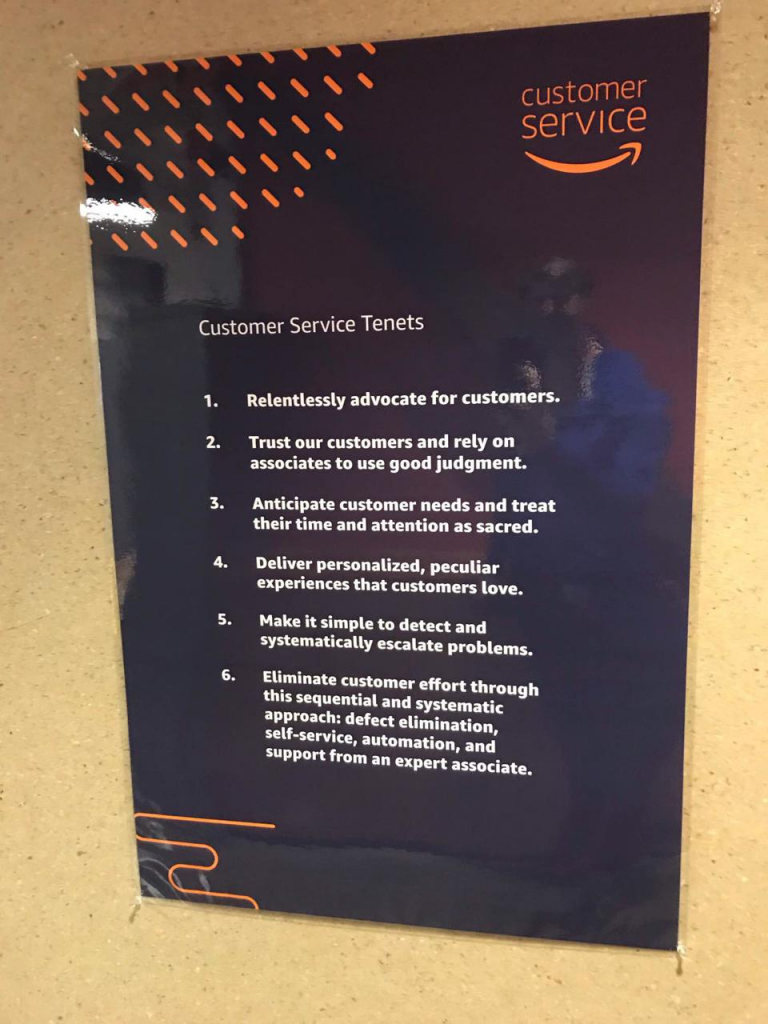
(Source: Forbes)
This philosophy underscores Amazon’s customer service tenet: “Anticipate customer needs and treat their time and attention as sacred.”
Amazon embodies this principle through several proactive measures to enhance the customer experience:
- Proactive Delivery Notifications: Amazon sends SMS notifications to inform customers about early or late deliveries. This proactive communication means customers don’t need to check the status of their orders, saving them time and providing peace of mind.
- Automatic Refunds for Video Purchases: If Amazon detects that the download speed for a video purchase is slow, they proactively issue a refund. This approach ensures that customers are not frustrated by poor service quality and feel valued and respected by the company.
These proactive strategies demonstrate Amazon’s commitment to reducing customer effort and enhancing satisfaction by addressing potential issues before they become problems.
Airbnb
Airbnb utilizes proactive live chat to assist guests and hosts before issues arise.
Here are some ways Airbnb effectively uses proactive chat:
- Assisting during booking: When guests navigate the booking process and spend a considerable amount of time on a particular listing or the booking page, Airbnb’s proactive chat can trigger a message offering assistance. This helps clarify any doubts or questions and reduces the likelihood of cart abandonment.
- Providing real-time updates: Airbnb uses proactive chat to notify guests of any changes or updates regarding their reservations. For instance, if there are changes to a booking or if additional information is required, the chatbot can initiate a conversation to keep guests informed, ensuring they are always up-to-date without needing to reach out themselves.
- Enhancing customer support: By monitoring user behavior, such as the time spent on help pages or FAQs, Airbnb’s chatbots can proactively offer help if it seems like a guest is struggling to find answers.
- Personalizing the experience: Returning visitors are greeted with personalized messages based on their previous interactions and bookings.
Canva
Canva exemplifies proactive customer service through several thoughtful strategies.
One notable example is their approach to the 30-day free trial of their Pro plan. Unlike many companies that silently charge users as soon as the trial period ends, Canva proactively notifies users three days before their trial concludes that their credit card will be charged. This reminder helps prevent unexpected charges, fostering trust and transparency between Canva and its users.

Jay Baer, a renowned marketing and customer experience expert, praised Canva’s proactive effort in a LinkedIn post, stating, “Of all the software I’ve tried and bought over the years (and it’s a LOT), I’ve never had a company proactively alert me that they were about to start billing my credit card, until Canva.”
In addition to billing reminders, Canva’s proactive customer service extends to various other areas:
- Onboarding and tutorials: Canva offers comprehensive onboarding experiences and tutorials to help new users become proficient with their tools. This proactive guidance reduces frustration.
- Frequent updates and notifications: Users receive regular updates about new features.
Elevate Your Business With Proactive Customer Service
Incorporating proactive customer service into your business strategy is essential for any company aiming to provide exceptional customer service. By anticipating customer needs and addressing potential issues before they arise, businesses can reduce frustration, build trust, and create a seamless customer experience.
Companies like Canva and Airbnb demonstrate the effectiveness of this approach by proactively communicating with their users, whether through reminders about upcoming charges or offering real-time support during the booking process.
Want to follow the example of the great?
Social Intents offers a range of chatbots and live chat solutions designed to engage customers proactively. With features that allow you to monitor visitor behavior and initiate chats at the right moment, we can help you deliver exceptional service and boost customer satisfaction.
Get started with our 14-day free trial now and see how proactive customer service can elevate your business.
